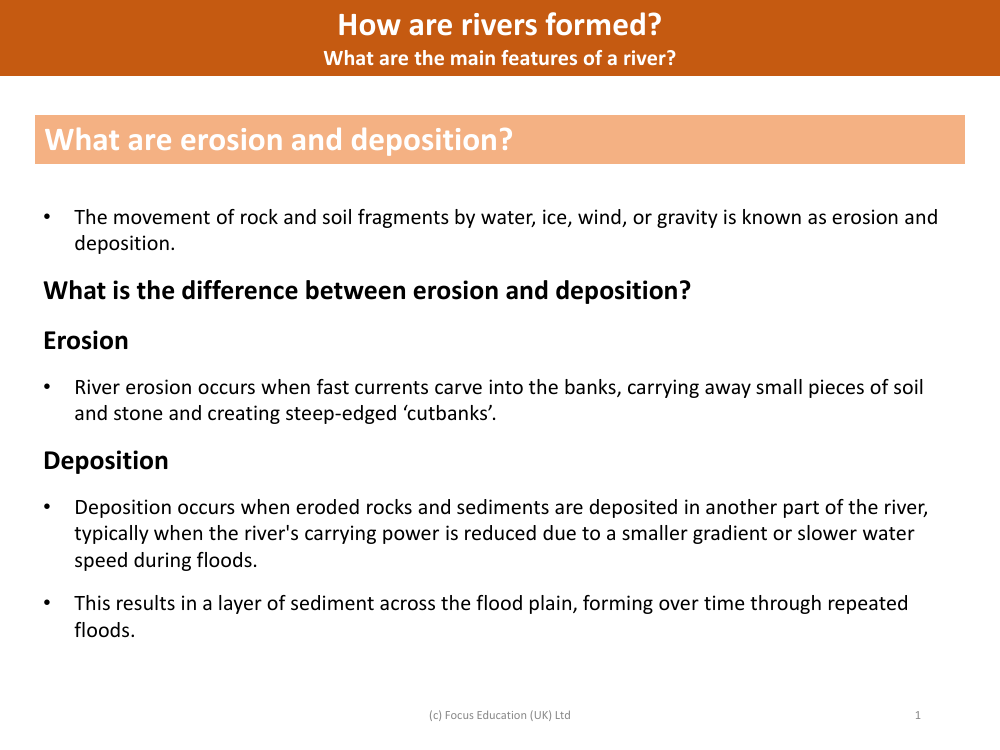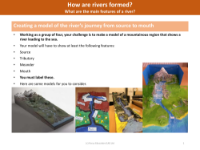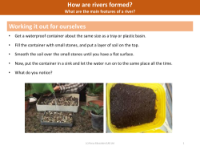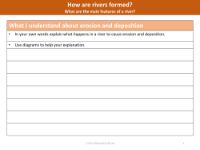Erosion and deposition - Info sheet

Geography Resource Description
Erosion and deposition are natural processes that involve the movement and relocation of rock and soil fragments. These fragments are transported by various agents such as water, ice, wind, or the force of gravity. Erosion specifically refers to the wearing away of the Earth's surface; for instance, river erosion takes place when swift currents aggressively erode the banks. This action results in the removal of small pieces of soil and stone, leading to the formation of steep-edged features known as 'cutbanks'. On the other hand, deposition happens when these eroded materials are laid down or settled in a new location, often within a different part of the river. This typically occurs in areas where the river's flow is less powerful, which might be due to a decrease in gradient or a reduction in water speed, such as during flood events.
Deposition leads to the accumulation of sediment across the flood plain, a process that occurs gradually over time with successive flooding events. These deposited sediments contribute to the formation and evolution of river landscapes. Understanding the dynamics of erosion and deposition is essential to comprehending how rivers take shape and develop their characteristic features. These geomorphological processes are fundamental in shaping the physical environment and play a critical role in the formation of various landforms associated with rivers and their surrounding areas.






